Paving stones are the hidden jewels of residential buildings in Budapest. Entering through gates in the capital, foyers, staircases, and hanging corridors showcase long-lasting different patterns and colours, some of which are more than 100 years old. So when glancing away from the facades, courtyards and bannisters, it's worth looking down.
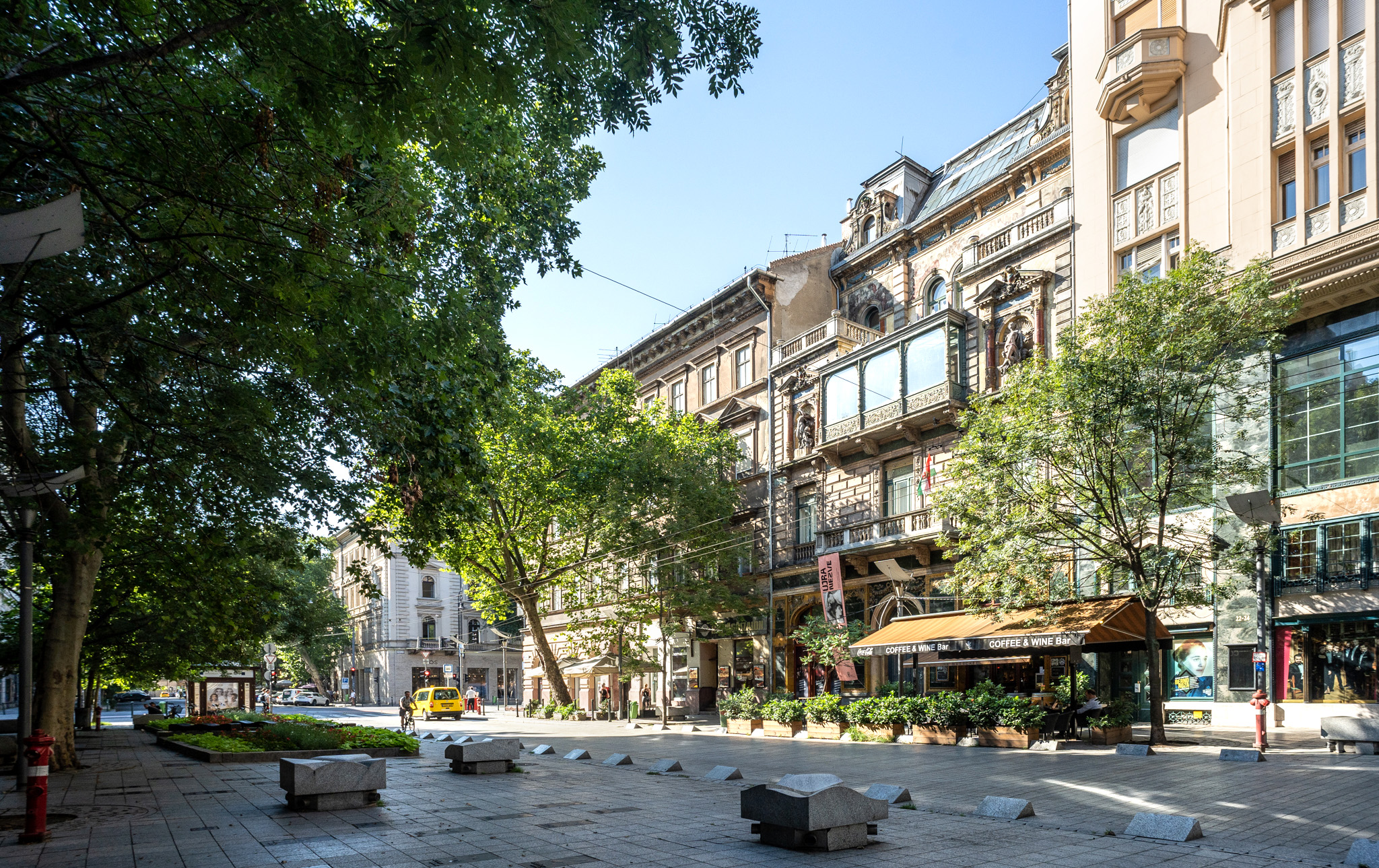
Mai Manó House offers an exciting view from the outside, but inside, dazzling decorations and, of course, beautiful floor coverings await visitors (Photo: Balázs Both/pestbuda.hu)
The most common types of paving stones are terrazzo, cement and Mettlach tiles. Terrazzo and cement tiles are the same size. Most often, both are 20x20 centimetres. The difference is that the surface of the cement boards is not sanded and smoothed. Cast and tiled terrazzo floors can be found.
Their history can be traced to the 15th century when workers in Venice's marble quarries began using the debris left in the mines to decorate their houses. The pieces were embedded in a binder, poured on site, and then polished so that the grains of the stones remained visible.
In Budapest, most terrazzo tiles have a light base colour with black, yellow and red patterns. They often indicate the year of the building's construction. Due to its special and unique patterns, it is always unique decoration and timeless. Because there are no gaps, it is easy to clean.
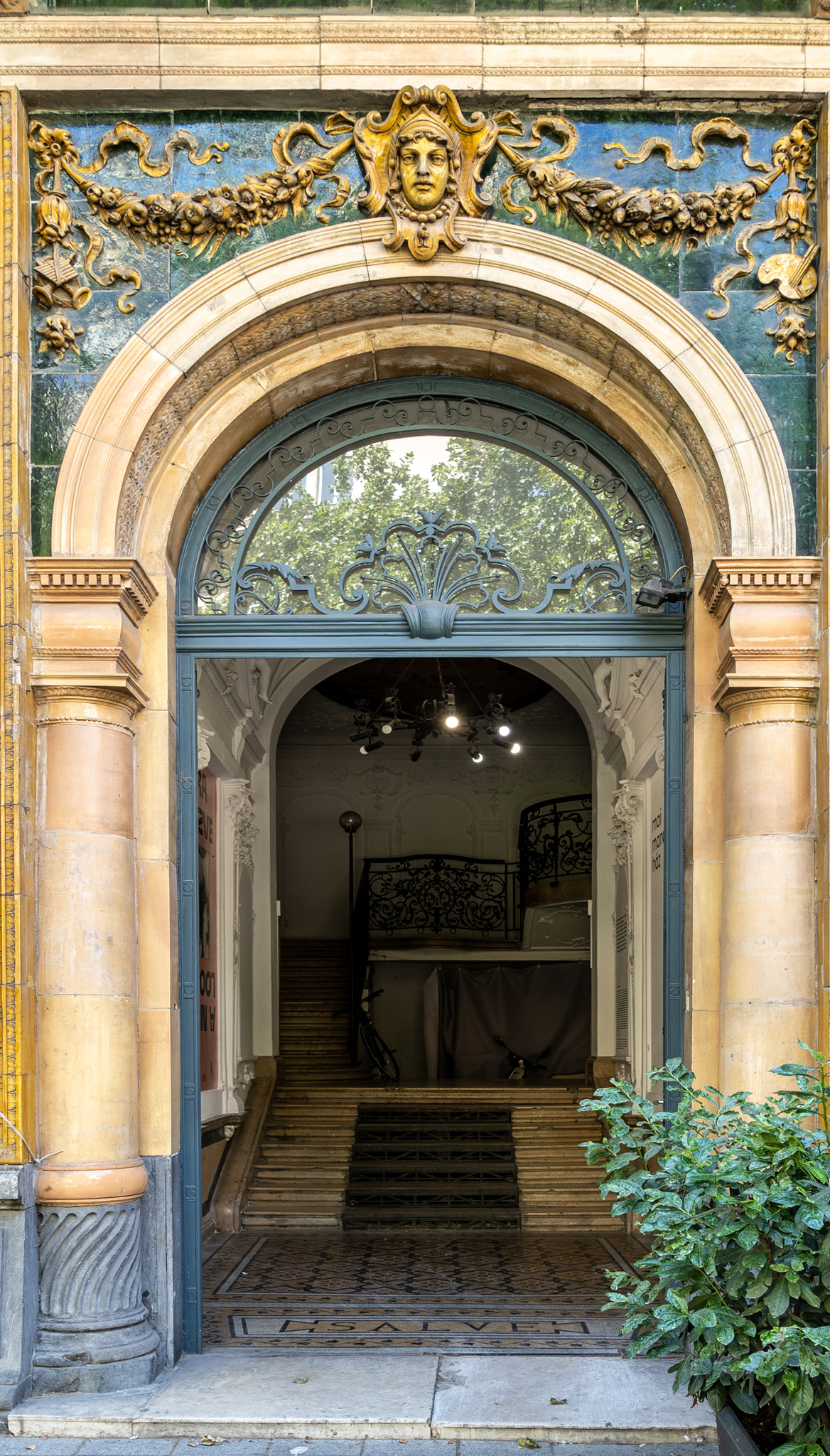
Walking through the open gate of the Mai Manó House, the ornate paving can be seen (Photo: Balázs Both/pestbuda.hu)
A good example of this is the terrazzo flooring at the entrance to the Mai Manó house. At the gate of the building, completed in 1894, the inscription “Salve” (Be greeted) salutes those entering. It is worth honouring this tempting call, as the building houses one of the best-preserved photographer studios from the period. The commissioner of Mai Manó house worked as a photographer of the imperial and royal court and also operated his residential and tenement house as a studio.
The house, built in the Neo-Renaissance style, was designed by Rezső Nay and Muki Strausz, József Mann oversaw the construction. A close look at the facade reveals the allegorical figures of photography and painting. While not visible from the outside, the building houses eight floors. Today, as the House of Hungarian Photographers, it houses exhibitions organised by the Hungarian Photographic Foundation.
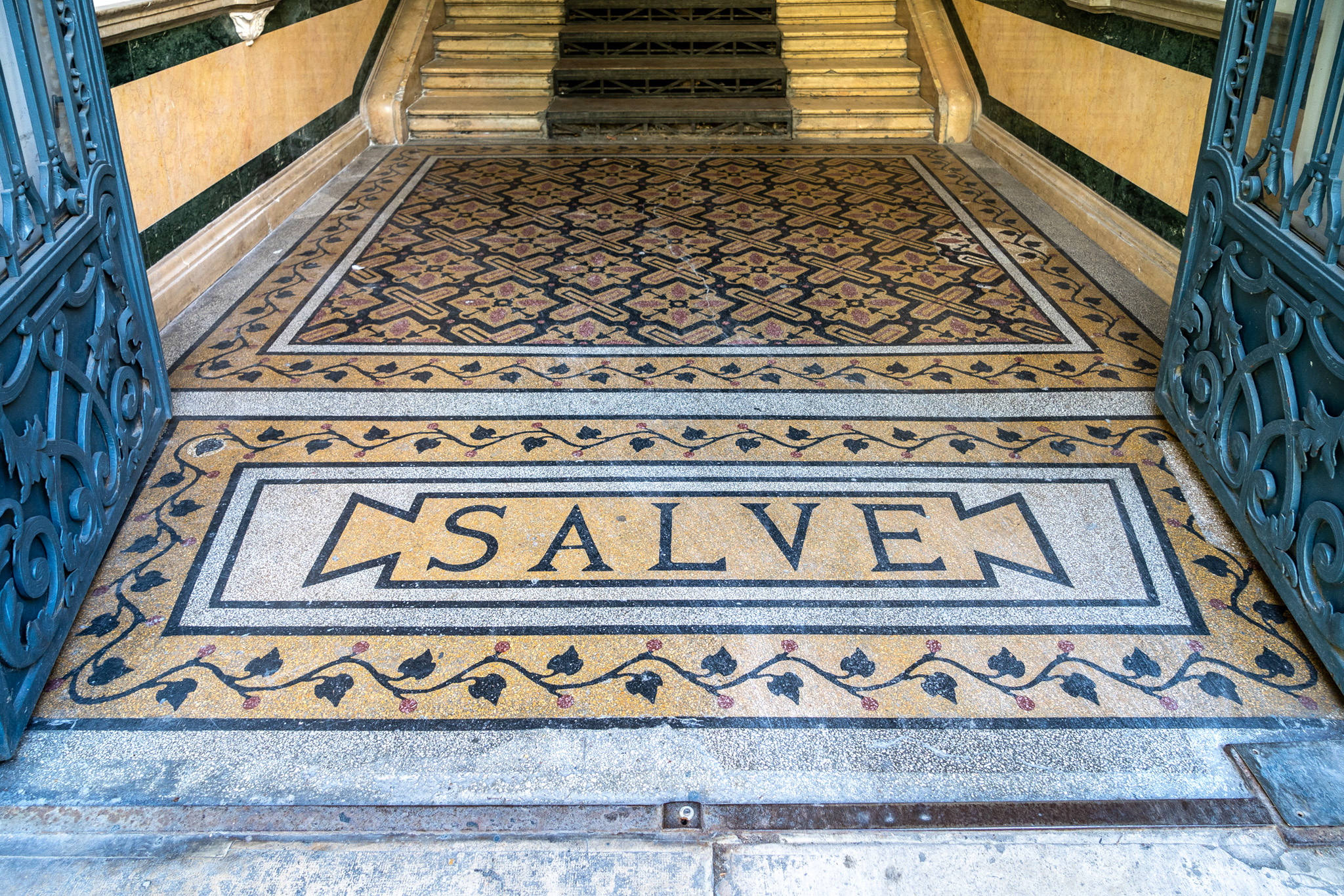
The inscription Salve at the entrance of the Mai Manó House (Photo: Balázs Both/pestbuda.hu)
The technique of terrazzo tiles is similar to that of the cast version. Their surface is also polished. Grains are present in their patterning. They are similar in durability and available in many different designs. However, as the regular tiles were easier to mass-produce, they were cheaper.
A flooring with this solution can be seen in the Heart of Jesus Church on Lőprinc pap Square. The church, operated by the Jesuit order, was built between 1888 and 1891 according to the plans of József Kauser in the Neo-Romanesque style. The black and white fleur-de-lis patterned floor tiles go well with the interior decoration of the church. From the foyer all the way to the sanctuary, the paving has the same pattern, thus ensuring a unified overall effect and creating a connection between the exterior and interior.
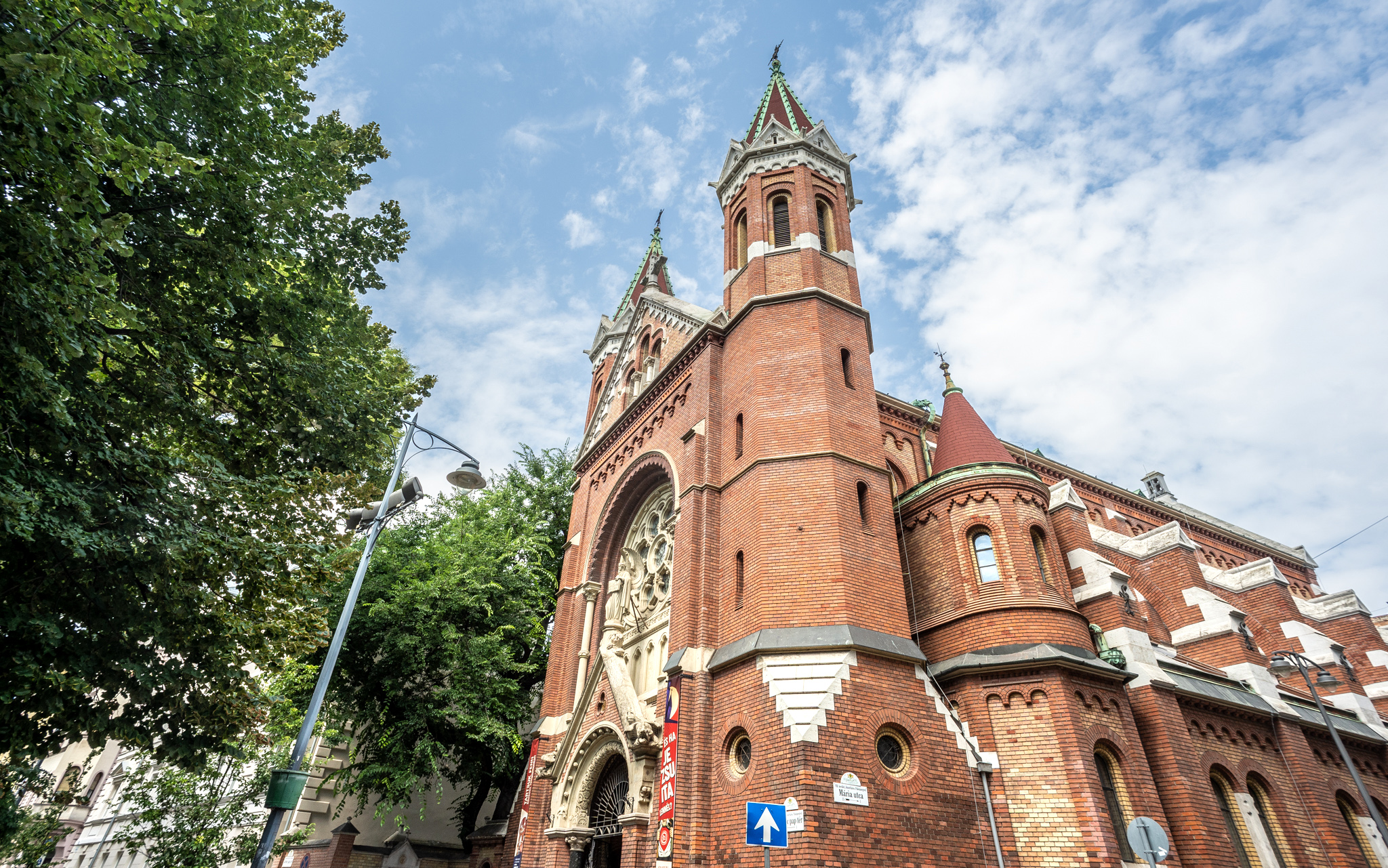 The Jesuit Church of the Heart of Jesus in the 8th District on Lőrinc pap Square (Mária Street), in one of the most beautiful parts of Pest, the Palace District (Photo: Balázs Both/pestbuda.hu)
The Jesuit Church of the Heart of Jesus in the 8th District on Lőrinc pap Square (Mária Street), in one of the most beautiful parts of Pest, the Palace District (Photo: Balázs Both/pestbuda.hu)
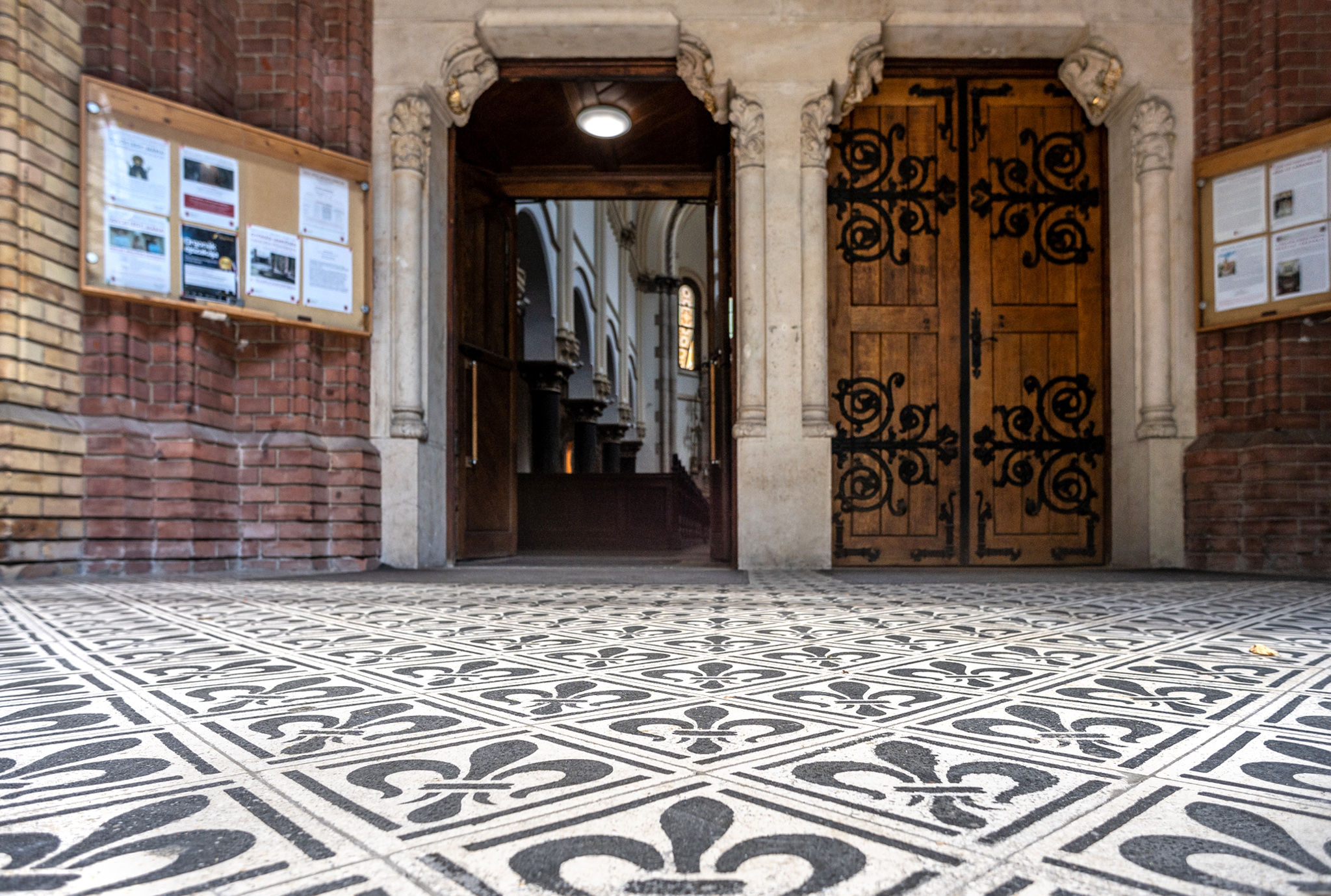 The floor of the foyer and the inner part of the church is covered with terrazzo tiles (Photo: Balázs Both/pestbuda.hu)
The floor of the foyer and the inner part of the church is covered with terrazzo tiles (Photo: Balázs Both/pestbuda.hu)
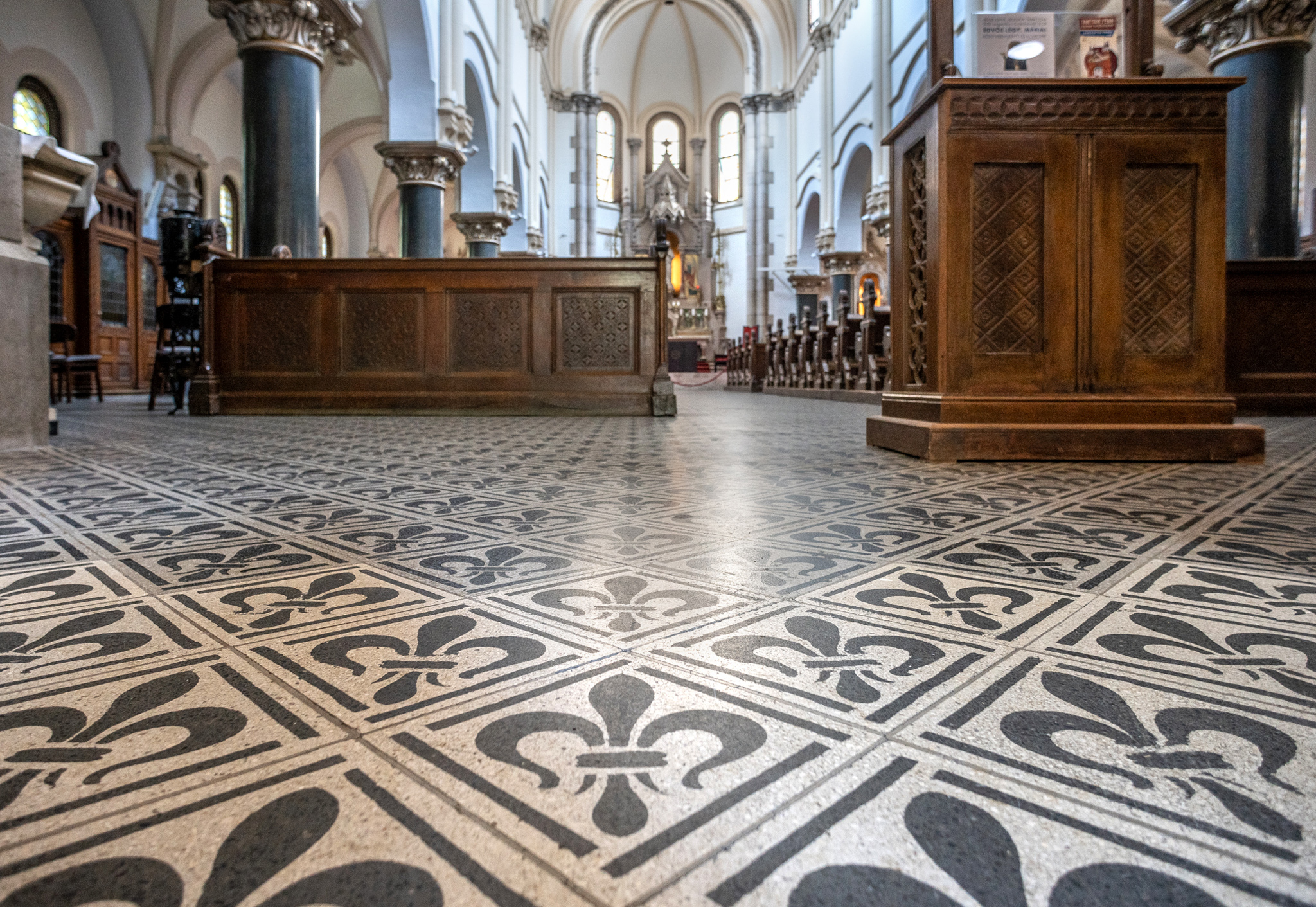
Fleur-de-lis decorate the church floor (Photo: Balázs Both/pestbuda.hu)
Cement tiles are pressed, unpolished stone pavements originally from Southern Europe. Their surface is smoother and more uniform than terrazzo. As a result, their pattern is extremely varied and varies from country to country. In Hungary, the names of József Walla and Péter Melocco are of note, as their factories were the main source of supply, and their products can be seen in many parts of the country.
They also worked on public and private orders. Walla's products appear inside the Parliament, the Royal Palace, several aristocratic palaces and market halls, and train stations. In recognition of his merits in the field of manufacturing, in 1904, he received the Knight's Cross of the Order of Franz Joseph. The Sunday Newspaper reported in 1896 that Walla's factory had expanded its activities after 1893:
“The production covers all branches of cement and mosaic production and the annual production is 650,000 marble and mosaic tiles,… the factory also produces 150,000 meters of granite terrazzo and 400,000 meters of concrete work and all kinds of cement products. The factory constantly employs 150 skilled workers.”
The mettlach tile is a few centimetres smaller than the previous ones, usually 17x17 centimetres. It consists of hard, fired-based sheets and can be traced to France. The surface of the tiles is brighter and finer than the others.
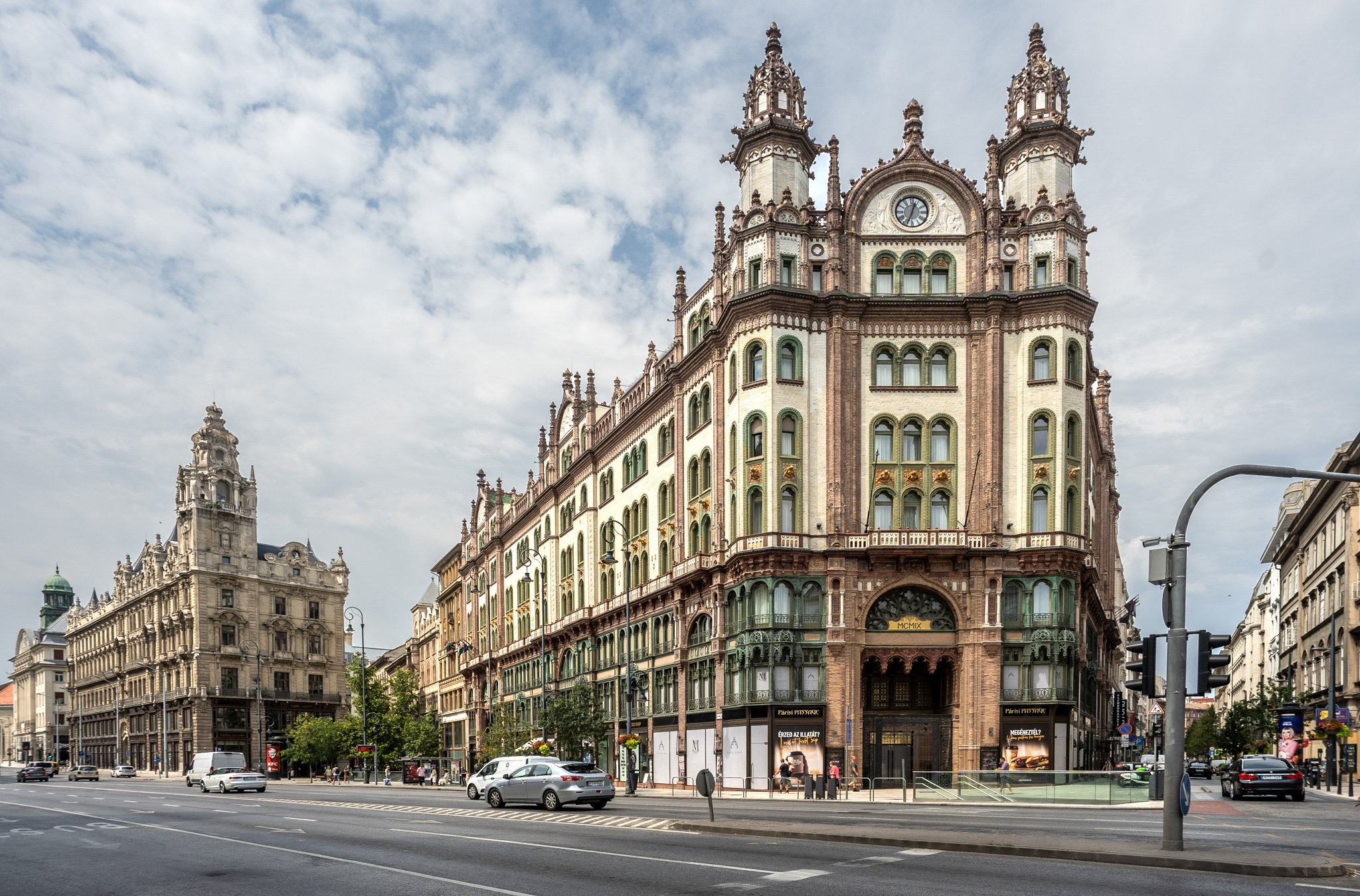
The Párisis Courtyard hides one of the most beautiful examples of the tile in Budapest. The remanufactured tiles follow the originals made by Villeroy and Boch completely. Mettlach tiles are augmented with mosaics and glass to let light to the lower floors.
The residential and office building on Ferenciek Square originally operated as the headquarters of the Belvárosi Takarékpénztár ('City Savings Bank'). The building seen today was designed by Henrik Schmahl, who won the tender for the new central branch to be built by the savings bank in 1907. While preparing the plans, Schmahl took into account the history of the department store previously standing on the plot, designed by Mihály Pollack.
The building had a line of shops on the ground floor, following the French example. It was commonly referred to as the Paris House, and the new building practically transferred this function to the ground floor. Thus, the building houses the oldest passage in Budapest.
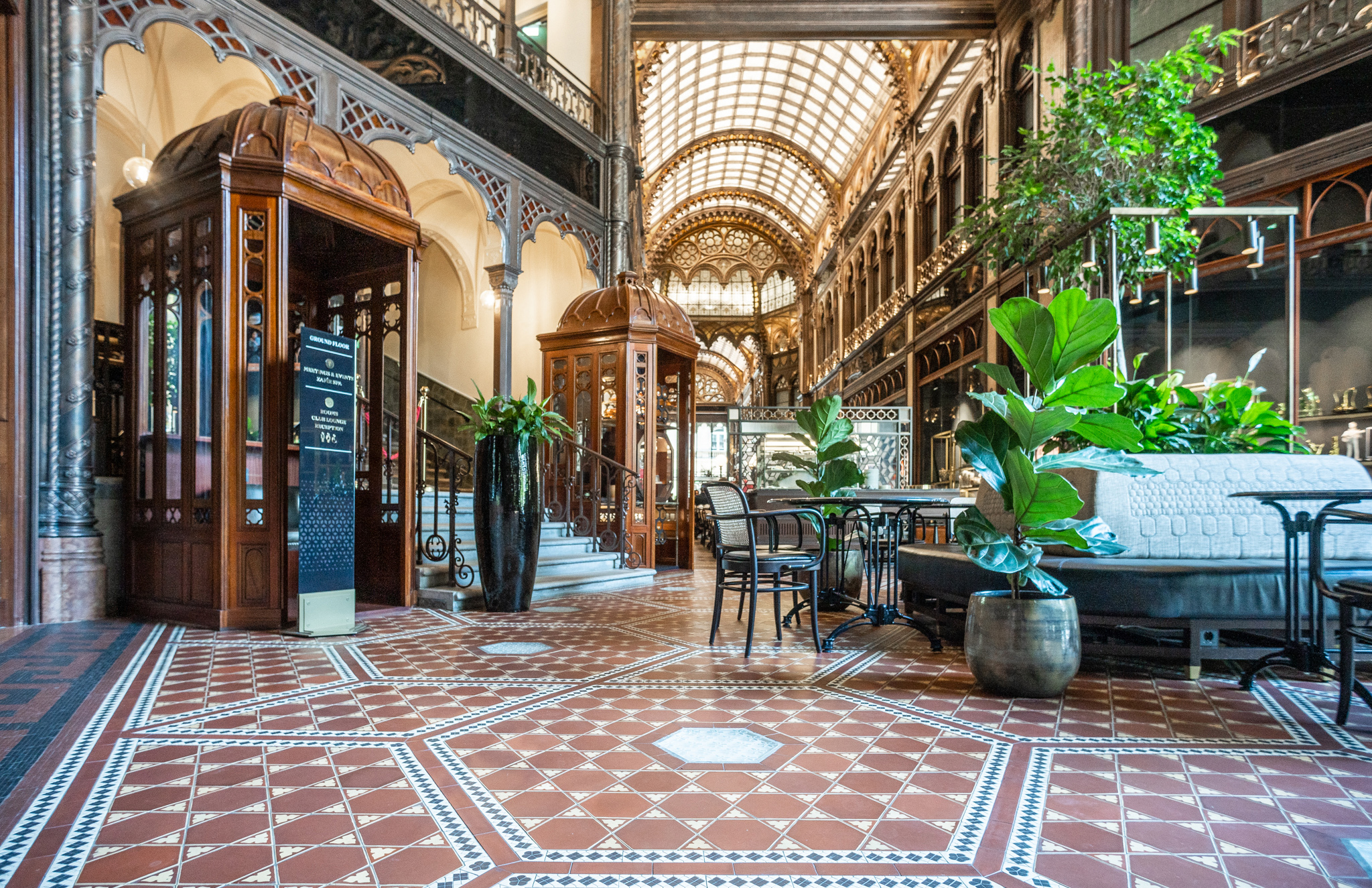 The lavish interior decoration of the Párisi Court amazes everyone, wherever they come from (Photo: Balázs Both/pestbuda.hu)
The lavish interior decoration of the Párisi Court amazes everyone, wherever they come from (Photo: Balázs Both/pestbuda.hu)
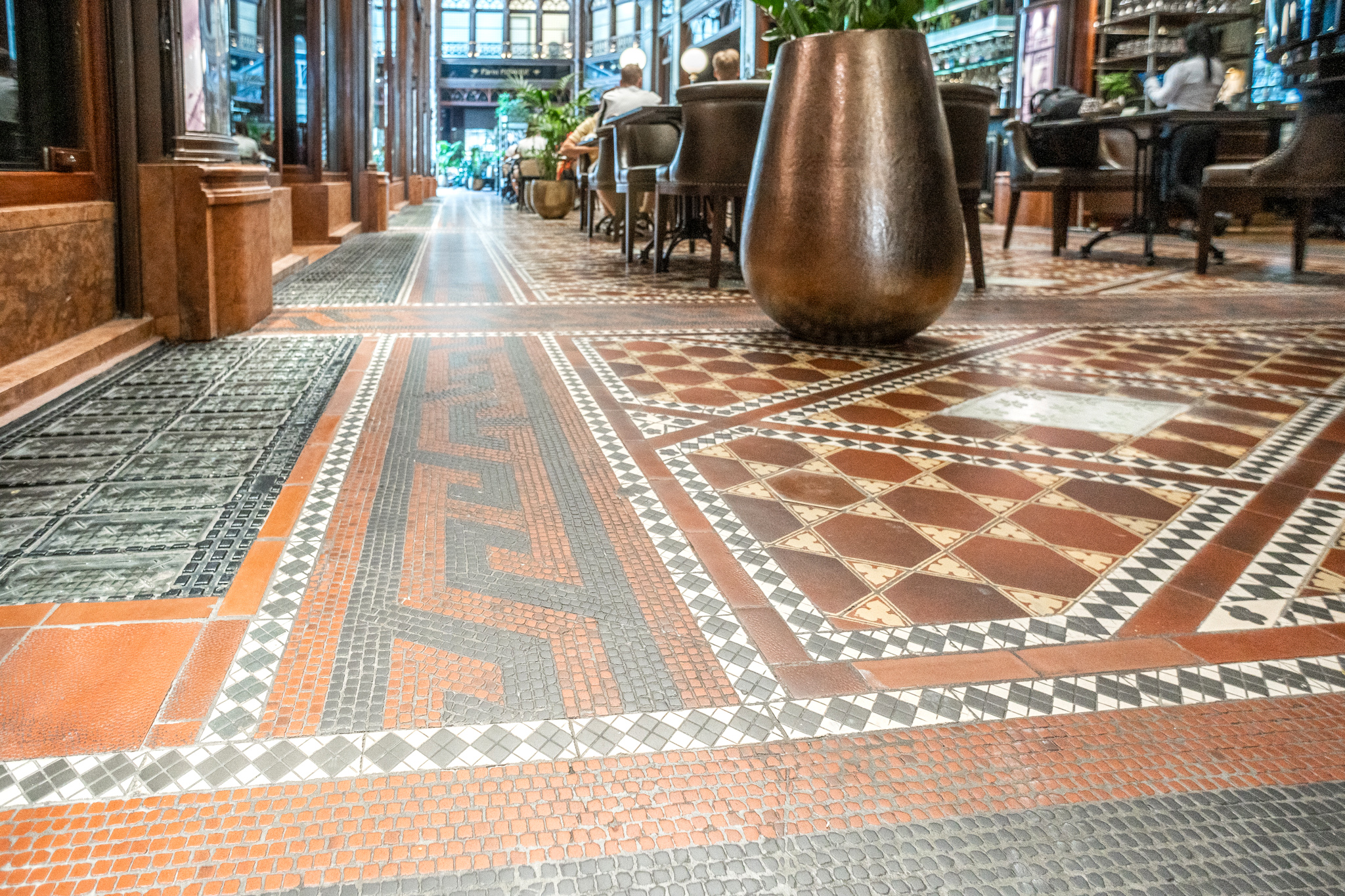
In addition to Mettlach tiles, mosaics are also common (Photo: Balázs Both/pestbuda.hu)
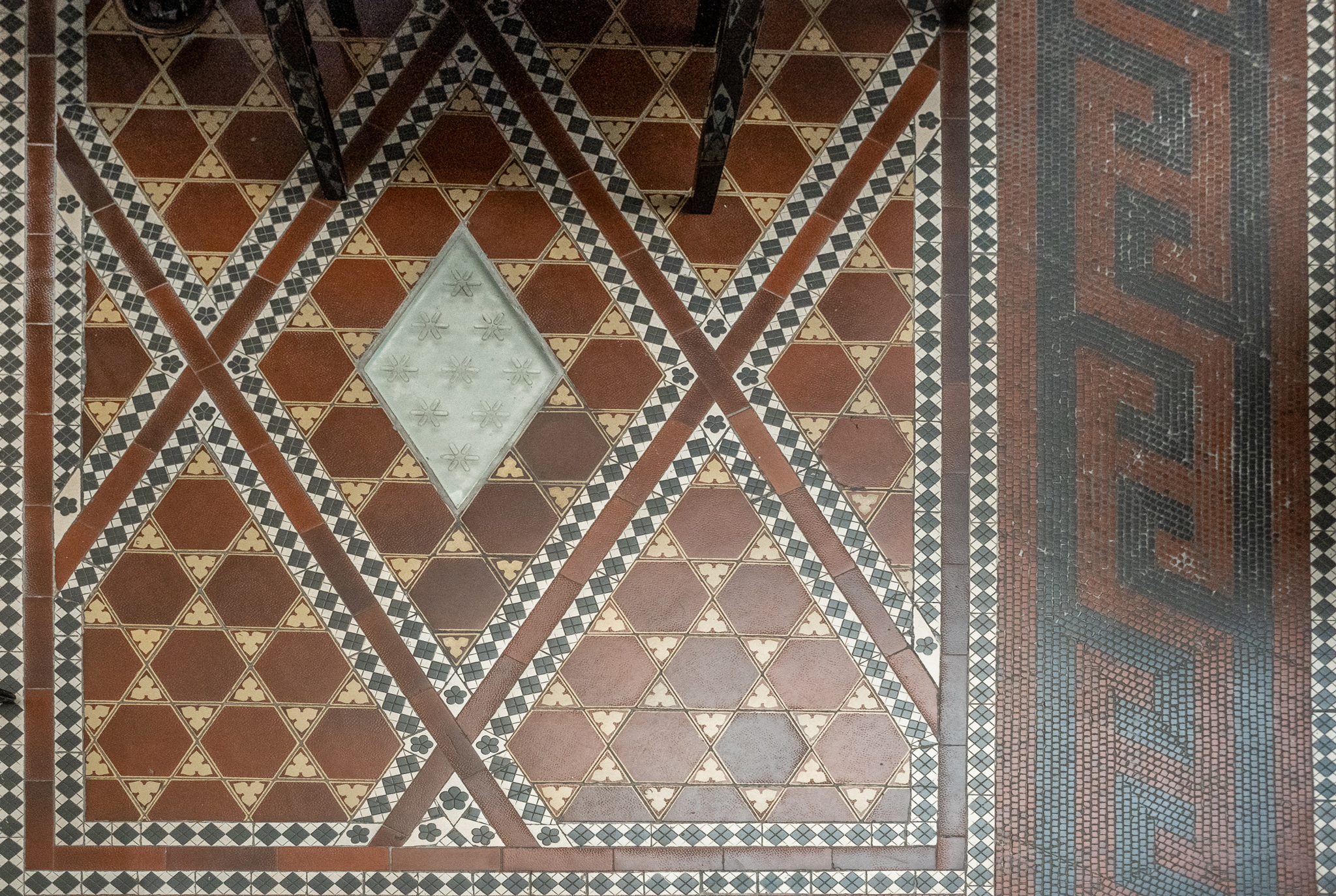
A floor can also be a work of art! (Photo: Balázs Both/Pestbuda.hu)
The different types of pavings hid many variations. Their decorations could also run from simple though multicoloured geometric patterns to art nouveau floral motifs. Unfortunately, during interior renovations, many have been replaced by tiles of a lesser quality. Fortunately, original paving elements can still be found in the city. And today, terrazzo and cement tiles are becoming more popular in homes again. They should all be preserved for the future generations of Budapest.

A stunningly rich pattern (Photo: Balázs Both/pestbuda.hu)
Cover photo: Detail from the Párisi Court (Photo: Balázs Both/pestbuda.hu)

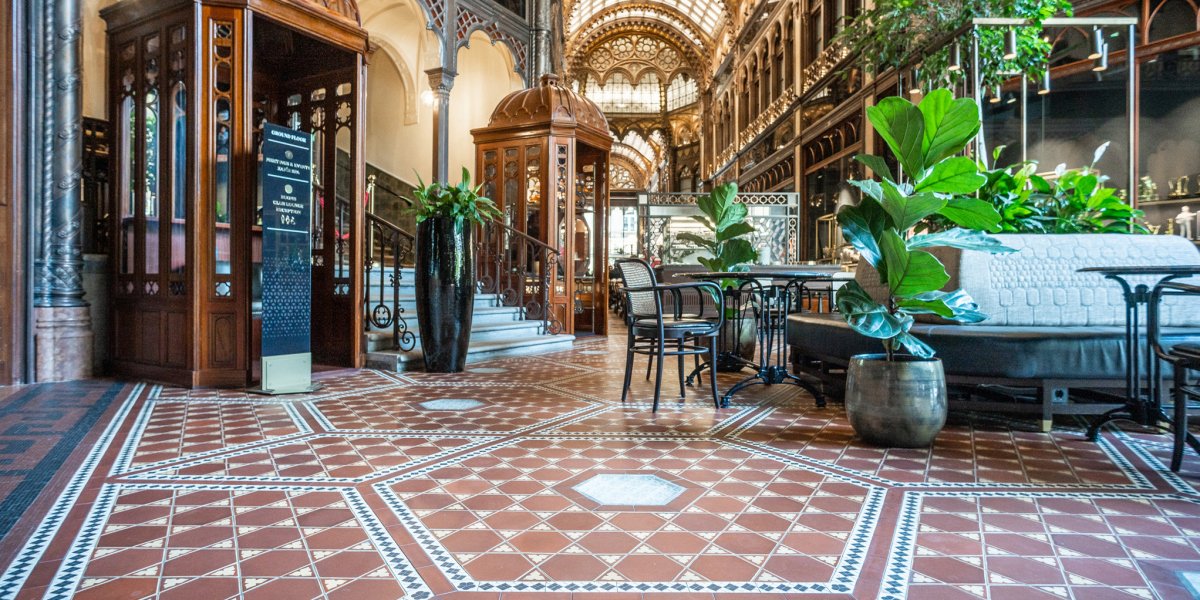



































Hozzászólások
Log in or register to comment!
Login Registration